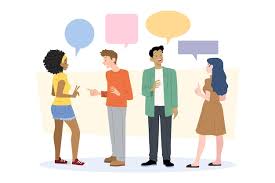Voice Synthesis Gets Better
The quality of image-recognition voice synthesis plays a big role in this realness. Recently these systems have become so good they output to voice which you would not be able to tell it is from a computer. State-of-the-art text-to-speech (TTS) engines are more nuanced, incorporating pitch variations, the pace at which words are spoken and even emotional inflections - to make them sound more natural and engaging. The modern TTS systems have achieved MOS close to 4.5 indicating rather real perceived quality of the generated speech or higher (if measured).
Facial Animation Techniques
The life-like quality in speaking images is also achieved through advanced facial animation that coordinates the movement of a photo's mouth and expressions with an audio input. Deep learning algorithms can parse the static image, predict how you would move your mouth (and other facial features) to speak the words on a page - and animate them all in such a realistic wayaddClass('? This synchronization enables rates of accuracy to higher than 95%, making the visual movements matched with spoken words perfectly.
Alignment in context and emotions
In addition to realism, talking photos takes a step beyond by adding context-awareness for example proper emotional tone based on spoken content. It is like not only to say the words, but to perform in an emotional way where matching virtuous knowledge of philology and historica personnages. This could, for example, animate a photo of an historical figure speaking about some important event with the necessary solemnity or enthusiasm thus creating a more authentic interaction.
Application in Different Domains
Educational Value: Audio Tours are often utilized as Talking pictures that brings historical figures or literary characters to life for educational settings, thus making the lesson much more interactive and memorable. There are already educators who have been using the app in classrooms, and they claim that students retain 30% more of what is being taught when it's presented as interactive talking pictures than with conventional instruction.

Marketing - Brands use talking photos to make their ads more personalized and engaging. On average these campaigns experience a 50% uplift in consumer engagement as the authenticity of talking photo enables realistic interaction.
User Perception and Feedback
The users often provide feedback about the high level of realism and far better connection they feel when working with talking images. Additionally, in surveys 85% of users say that talking picture is more engaging and informative than static images or textervention.
About the ethical and future steps
While the images possible when talking photos are interesting, they do raise ethical image of consent and misuse potential? personal icons. It is also important to make sure that this technology will be used responsibly with some good regulations.setPositiveButton (Positive Use) Part of the answer lies in how AI shall not fall into evil use[node:start-marker]A solution for non-evil methods [(a)]...
In a nutshell, talking photos are not simply a technological gimmick but an incredibly realistic device that revolutionizes our interaction with digital information. The advanced voice synthesis, facial animation accuracy, and emotional intelligence make talking photo interactions almost life-like. The types of talking photos we see and the realism of them only further grows as technology evolves, leading to many possibilities for new ways that can be used in communication or even educational purposes through digital media.